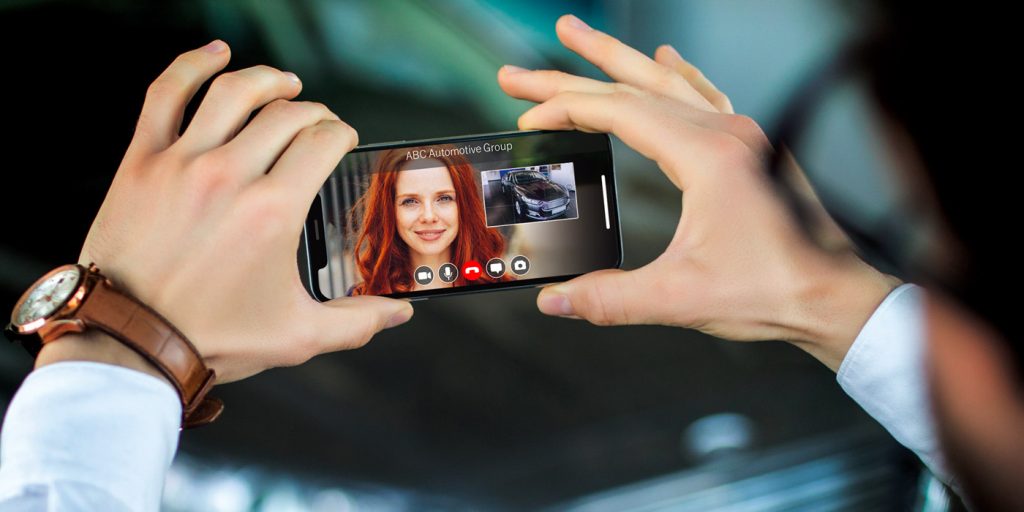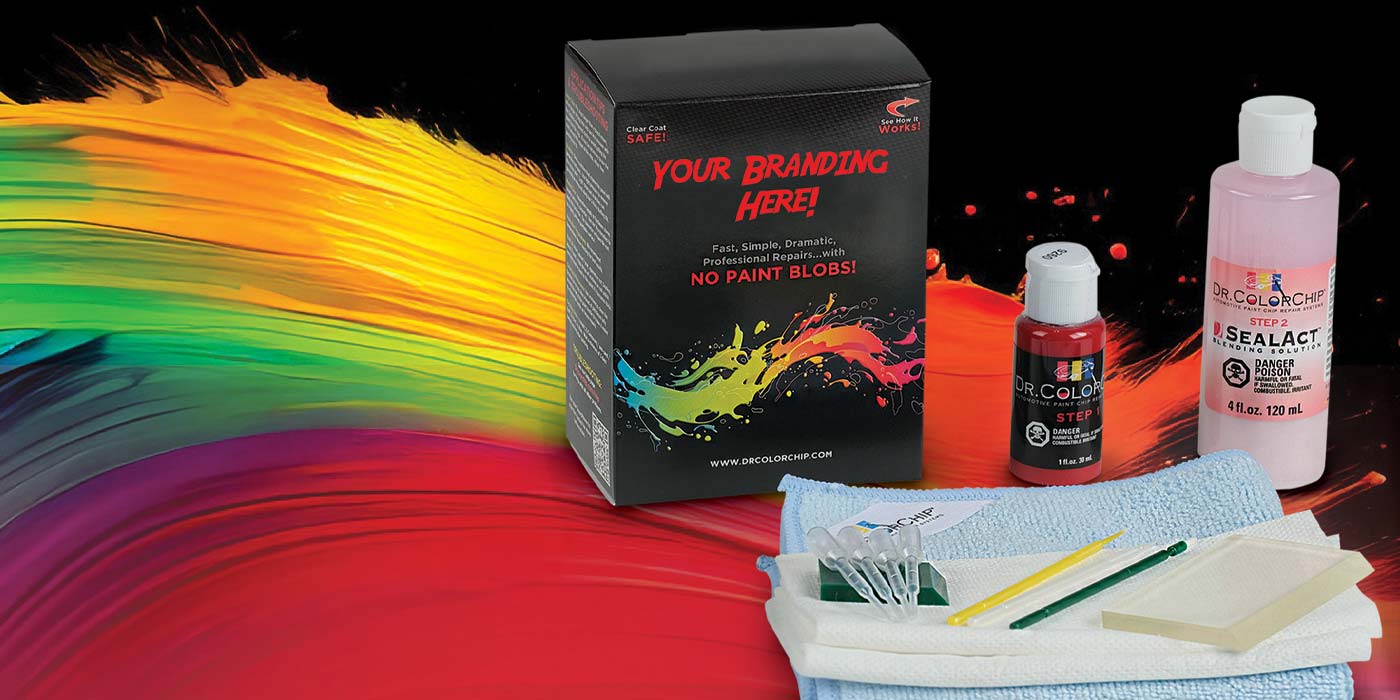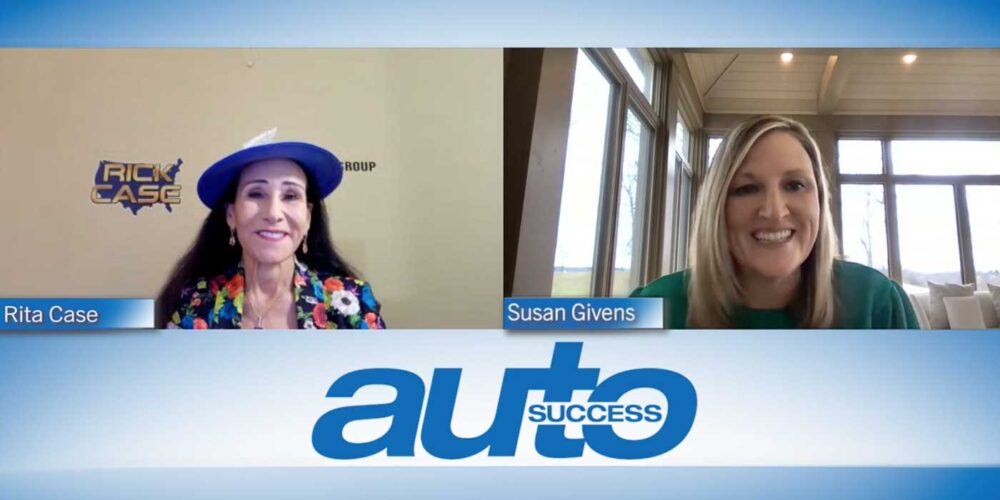One-click video calling creates the fastest and most dynamic way for shoppers to engage with sales and service teams.
While many dealers have embraced video marketing in their dealerships, their use of real-time video communication still lags behind mainstream consumer behavior. In particular, the use of live-streaming video calls by salespeople and service advisors is practically non-existent in dealerships, representing a huge missed opportunity.
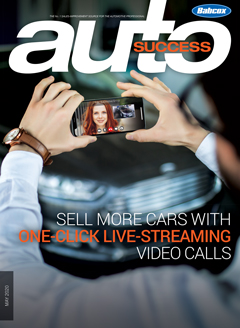
The popularity of consumer video chat apps such as FaceTime, Skype and Zoom has been on the rise for years, especially among Millennials. According to a 2019 study by Vonage, one in three Americans video chat with friends and family at least once a week.
But video chatting isn’t just for social use anymore. According to the same study, nearly one in five Americans use live video to chat with a business, brand or service provider at least once a week; and one in three consumers are using video chat to speak with a sales advisor about a big ticket or specialized item. You can even video chat with your doctor instead of having to drive to their office and sit in their waiting room.
With the recent COVID-19 pandemic and social distancing guidelines, many thousands of people are now working from home. Consumers who previously weren’t familiar with live video are now using video apps for virtual meetings and conference calls. Additionally, families and friends are connecting socially via video chat apps. Getting together for video happy hours and family time is becoming the new social norm.
According to Priori Data, downloads of video apps such as Skype and Zoom surged well over 100% in the month of March. Zoom alone was downloaded 27 million times in March, compared to 2.1 million downloads in January.
As society slowly opens up, it’s unlikely that consumers will abandon these apps, or their newfound video chat habits. According to the Vonage study, a key motivator for video calling is that it creates a more personal experience compared to other channels such as a phone call, text message or traditional chat. If you can’t sit in front of someone face-to-face, there’s just no better way to communicate than via a live video call.
Connecting with Customers
As a dealer, you may believe that your sales and service teams have plenty of ways to communicate with your customers. Why do you need video calling?
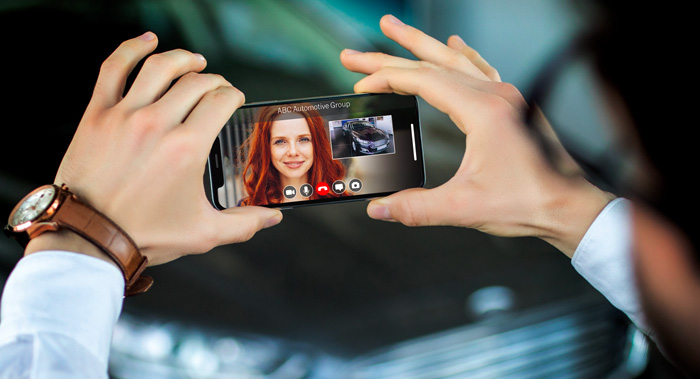
Approximately 10 years ago, there was a new disruptive technology that came along called Chat. At first, most dealers hated it. They didn’t believe in it and didn’t want a chat tool on their website. They believed their salespeople were better off using the phone. But eventually, chat became ubiquitous and now almost every dealership has chat on their website because customers desired to communicate this way.
The adoption of chat as a communications tool is an example of consumer-driven demand. A certain segment of the population enjoys using chat. It’s also ideal for customers who have a few basic questions about a piece of inventory, hours or location, or who want to set an appointment.
Similarly, email and phone as communication channels both have their strengths and weaknesses. The fact is, most dealerships hire employees because of their interpersonal skills. Salespeople and service advisors are generally likeable and skilled at building rapport in person. They excel at face-to-face communication, but not all of them are as skilled on the phone, and very few of them are skilled at crafting professional, persuasive emails. Many dealerships even utilize managed chat services because their salespeople do not like to communicate with consumers via traditional chat, or are not skilled at this form of communication.
This is where live video calling can provide your sales team with a significant advantage over other forms of communication; not just now, but long after the COVID-19 pandemic has passed. Live video calls create a virtual, personal connection between people that’s as close as you can possibly get to actually being there.
Another reason that some dealers resist video calling is because they want the customers to come into the store. This is backwards thinking. Video calls are the perfect way to engage a lead early in the sales process, build trust and forge a personal relationship with your employees. Once that connection is established, your team can do what they do best: bring the customer down funnel and eventually ask for the appointment.
People buy from people they know, like and trust. We’ve known this for years but do very little to promote it via our digital marketing strategies. You can absolutely build a personal relationship with a consumer higher in the buying cycle that will 100% assure you that the shopper is going to buy from you and you alone, long before they have settled on the vehicle they desire to purchase.
Additionally, as a business owner, it’s critical to communicate with customers the way they want to communicate, not the way that you want to communicate. Just as traditional chat features are on your website because of consumer demand, the consumer demand for video calling is not going to fade away as the COVID-19 pandemic passes. It will be a desired communication in the future and may even become the most desired at some point in the not too distant future.
Live-Streaming in Your Dealership
In sales, video calls are ideal for communicating with shoppers throughout the entire buying process; from higher funnel questions to lower funnel real-time, virtual vehicle walkarounds. The fact is that most shoppers are looking for a salesperson and a dealership that they can trust, just as much as they are a vehicle to purchase. Your goal should be to provide your shoppers with the communication tools that allow them to communicate with you the way they want to communicate. The best part about live video calling is that this is also the way that most of your salespeople communicate best.
In service, video calls are a great way to increase customer approvals for recommended repairs. A best practice is for service advisors to video the multi-point inspection (MPI), then send the video to the customer via text or email, along with the recommended repair. If the customer is hesitant or has any questions, all they have to do is initiate a live video call with the service advisor. The service advisor can answer questions and literally show the customer the part that needs to be replaced live and in real-time. This visual proof gives the customer confidence to approve the necessary repair, and adds an additional trust layer that will dramatically improve CSI scores.
Nearly 1 in 5 Americans video chat with a business, brand or service provider at least once a week.
– Vonage
How to Choose a Video Call Solution
When choosing a video calling solution for your dealership, it’s important to create a strategy that provides the best experience for the consumer. There are a lot of variables that come into play when trying to engage a consumer in a video call. Are they browsing your website, viewing a promotional landing page or responding to an email or text from your salesperson? Are they utilizing a desktop computer or mobile phone at this exact moment? Is that device a PC, Mac, iPhone or Android? Each variable can create limitations or obstacles that could make it difficult for the consumer to connect with you quickly, and in sales, anything other than quickly is not an option.
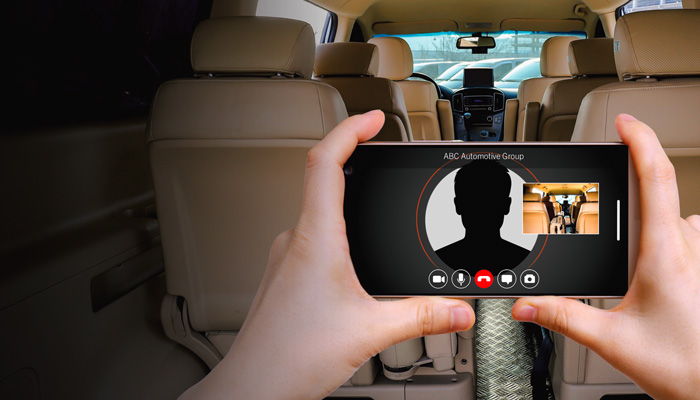
The good news is that there is an exciting new technology that allows for “one-click” audio and video communications to work inside web pages by allowing direct peer-to-peer communication and eliminating the need to install plugins or download apps. This new technology, WebRTC (Real Time Communication), is an open-source project that provides web browsers and mobile applications with real-time communication via simple APIs. This makes it easy for you to simply place a “video call” button on your websites, landing pages and email communications, and allows a consumer to engage with your team with just “one-click” no matter what variable exists: mobile vs. desktop, PC vs. Mac, iPhone vs. Android, etc.
There are even WebRTC one-click video call technologies built specifically for automotive that can place a video call button on your emails and/or text messages (in addition to your website and landing pages) that are delivered from your CRM, record each event and pass the video back to your CRM to be stored within each consumer’s profile.
“As a business owner, it’s critical to communicate with customers the way they want to communicate, not the way that you want to communicate.”
Another important part of the strategy is to give your consumer the choice of making a one-way or two-way video call. If you just provide a two-way call option or throw them into a two-way video call without their knowledge and authorization, some shoppers would feel uncomfortable. In some circumstances, this may even be a violation of their privacy.
For this reason, look for a video calling technology that allows the consumer to initiate a one-way video call as the default option, but could also allow for a two-way video call if desired. In a one-way call, the salesperson can be seen and heard by the customer, but the customer can only be heard, and not seen, by the salesperson. This will make consumers more comfortable initiating the video call with you higher in the buying cycle as you build trust, form a more personal bond and allow the consumer to remain anonymous (or video chat with you while having a bad hair day) until they are ready to move to the two-way video call.
No matter what technology you utilize, the option to initiate the video call should always be left with the consumer. As a business, your job is to make the process of making that video call as easy as possible, which is why the ability to embed click-to-call buttons on your website, landing pages and in emails and texts is a critical feature.
Finally, choose an application that allows you to track, record and store each video call event in your CRM. This feature helps to eliminate any “he said, she said” scenarios that might occur. Additionally, stored video calls can be reviewed and used for training purposes, to help improve your team’s video communication skills.
Video calling is here to stay and is the ideal way to engage customers and leads. Using video calls throughout the sales and service life cycle will help your team establish and maintain a personal connection with customers and ultimately lead to increased customer loyalty and sales. The key is making it easy for the consumer.
For more information, visit flickfusion.com.

